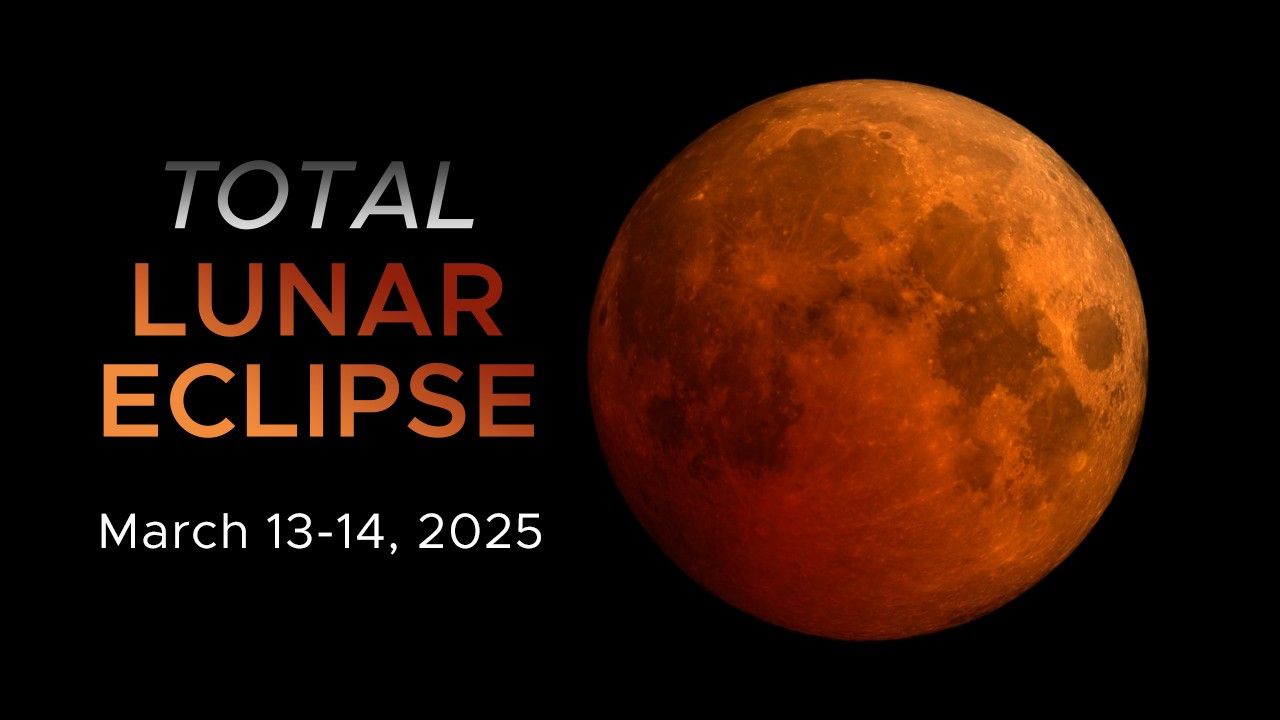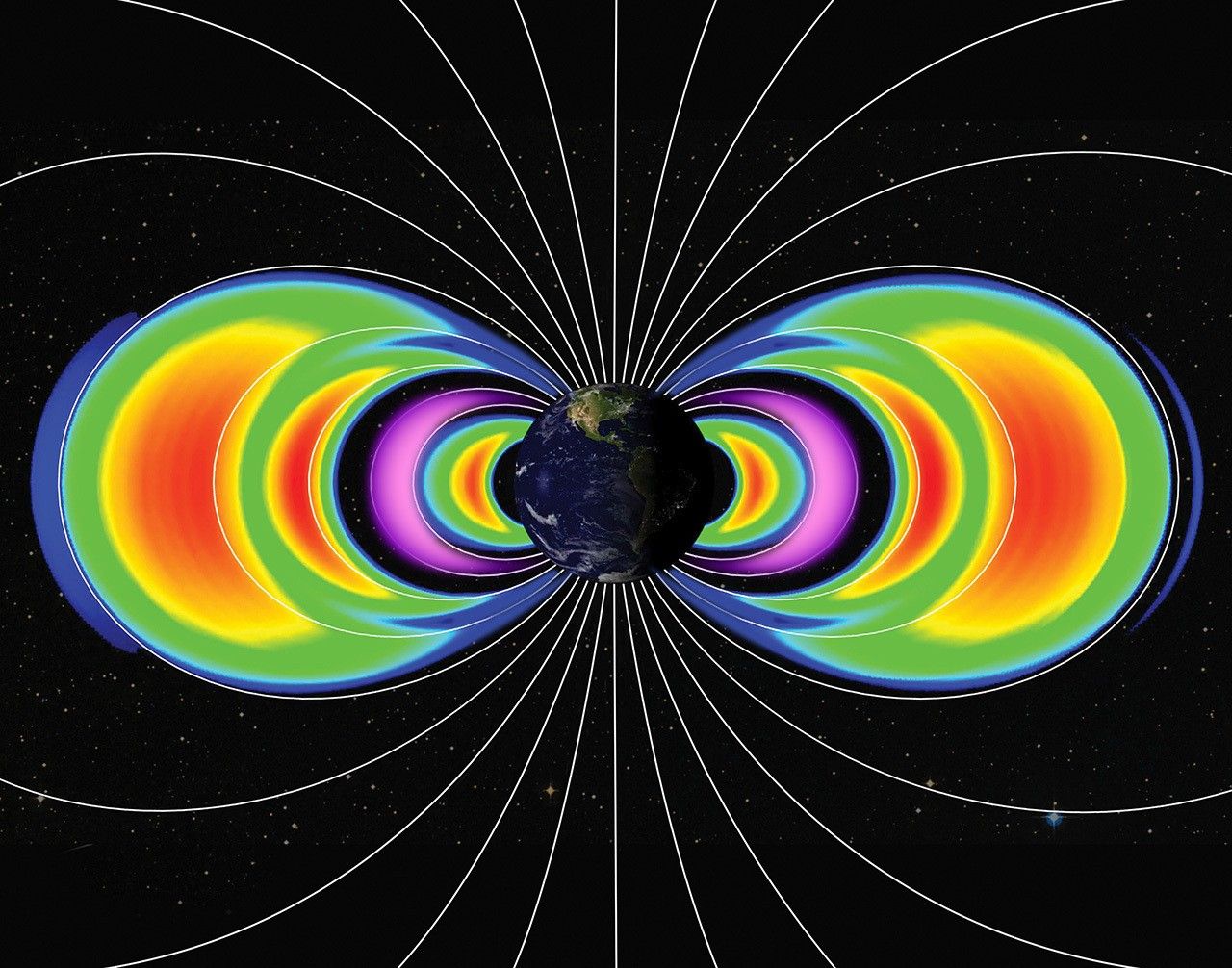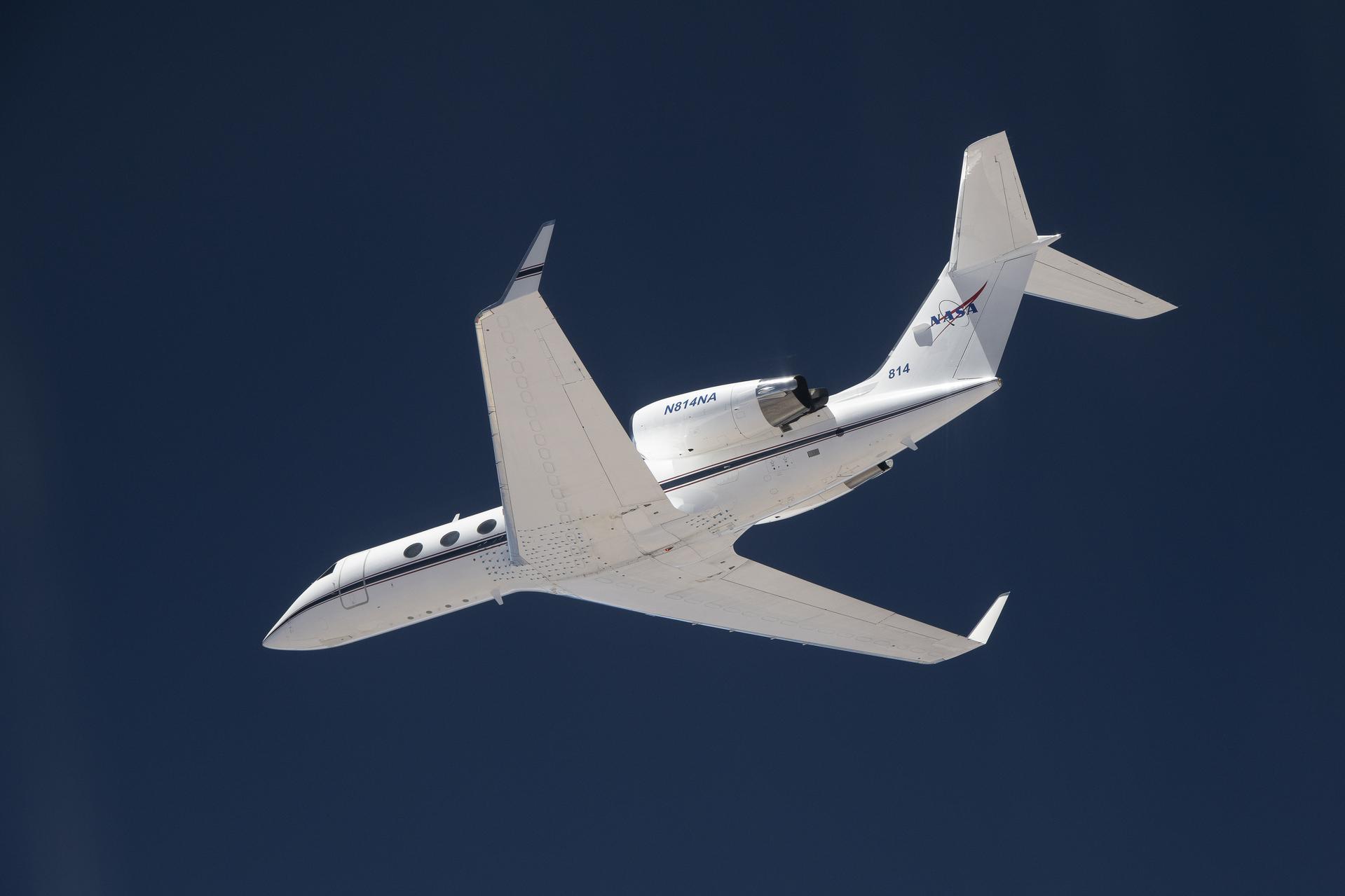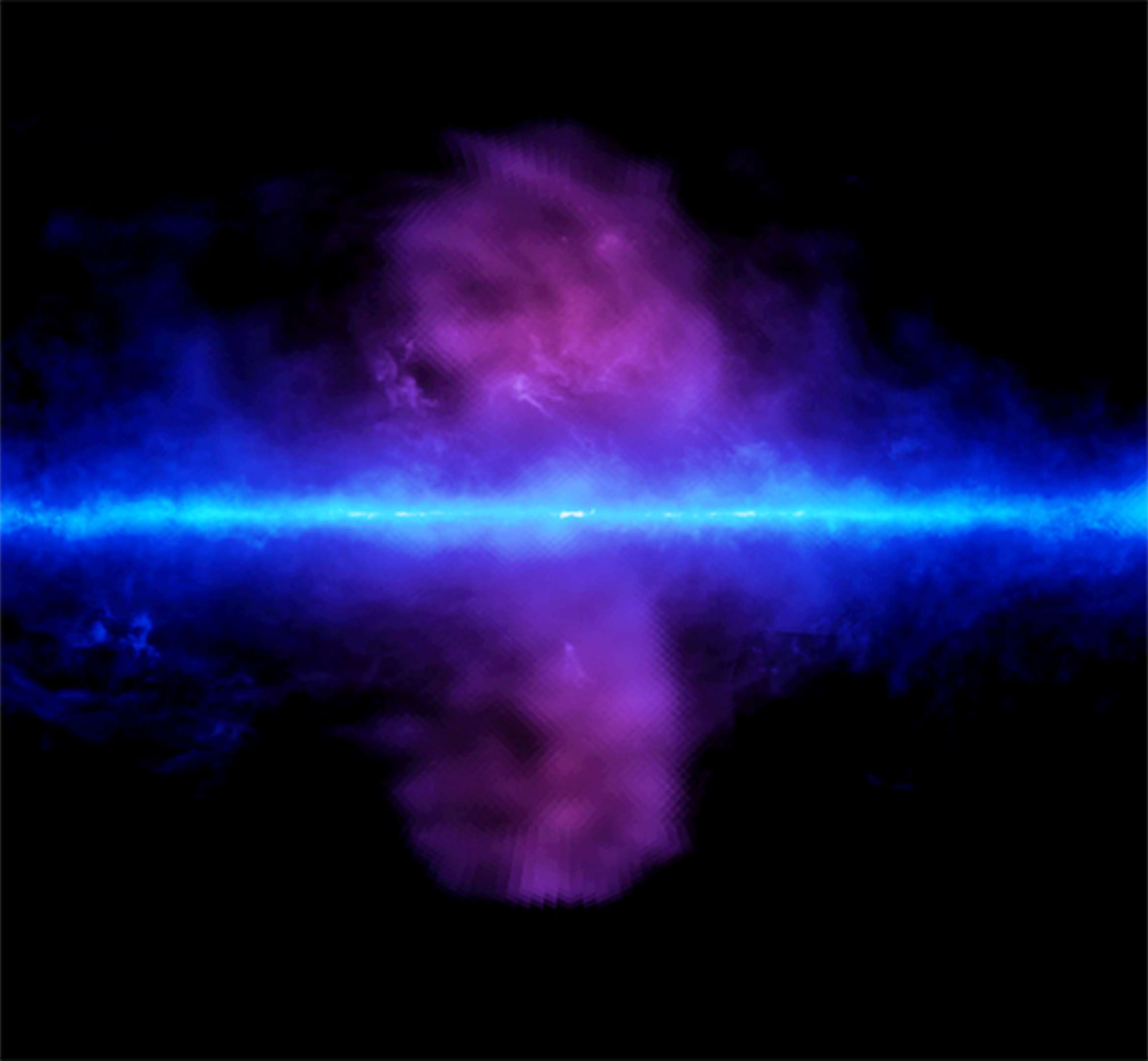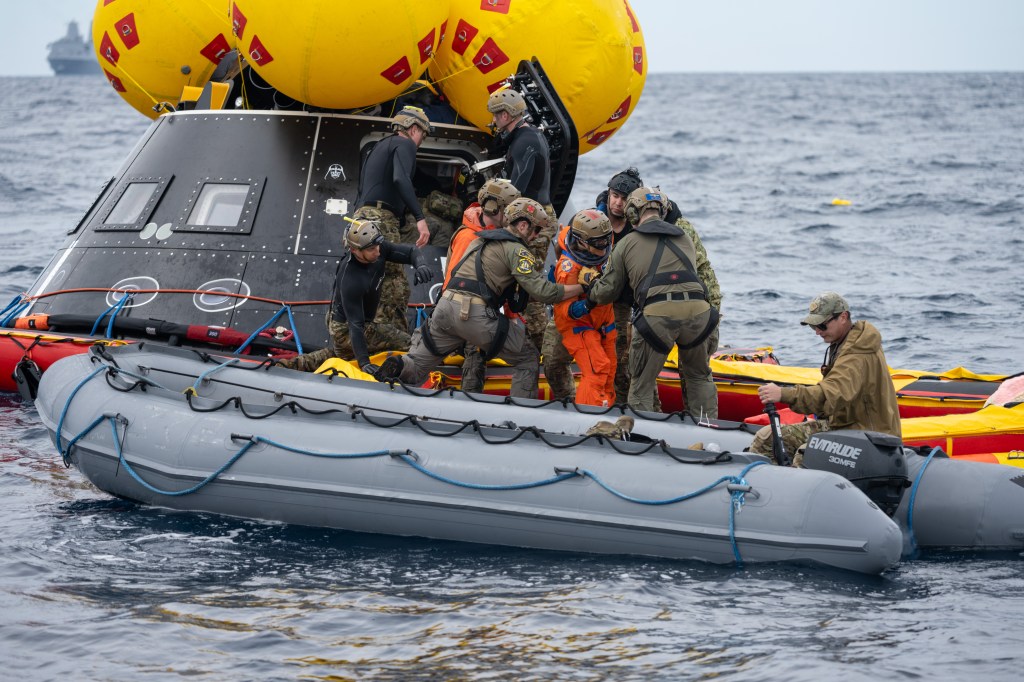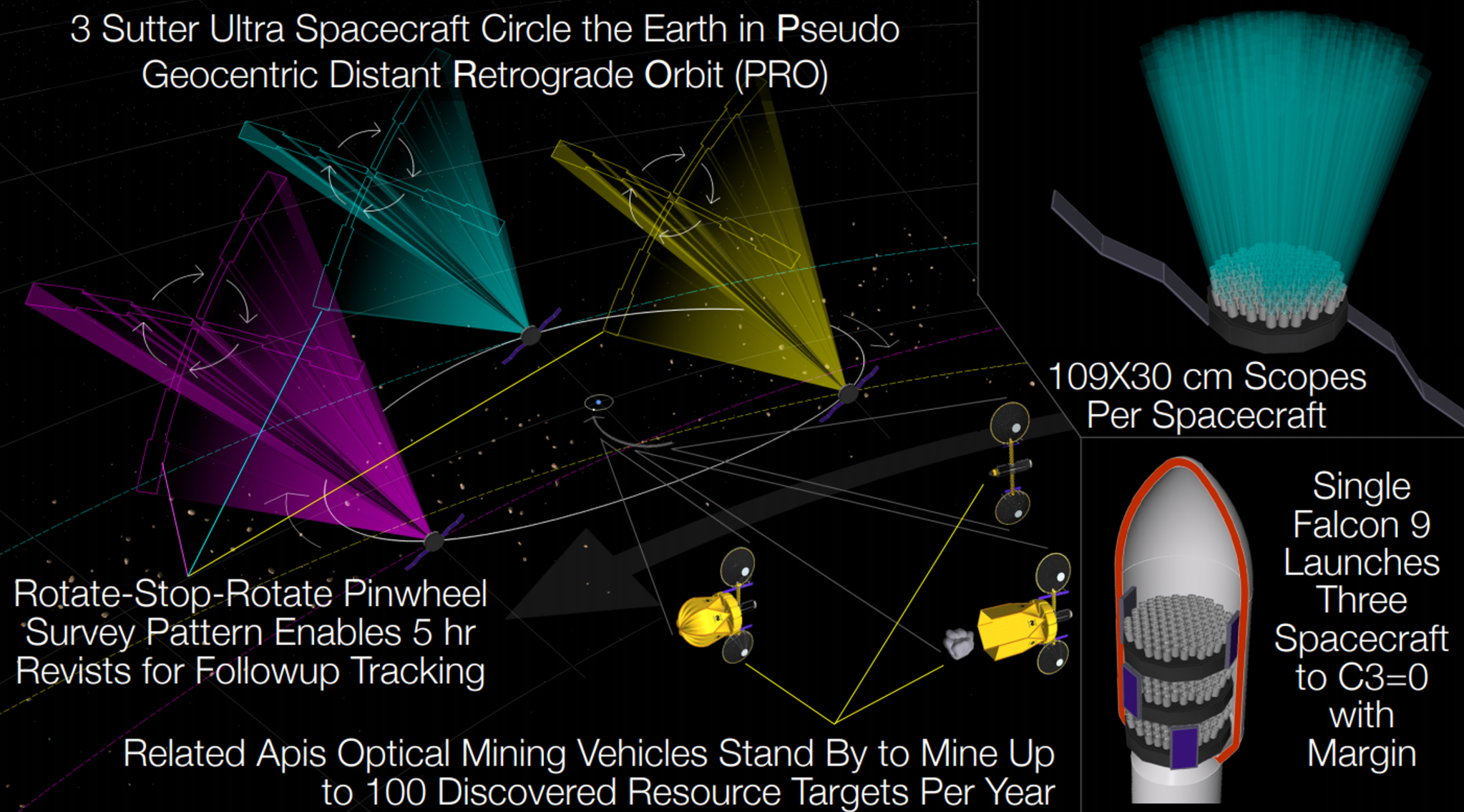Peter Gural
Trans Astronautica Corporation
There are 3 key reasons why it is vital for NASA to develop better ways to locate and characterize Near Earth Objects (NEOs). 1: NEOs are an impact hazard to the Earth. 2: Measuring NEO population distributions will unlock the answers to critical questions dealing with the formation and evolution of the solar system. 3: Most importantly, low ∆V NEOs can be targets for human exploration and resource mining. Finding them will enable breakthrough missions. NEOs represent an invaluable source of material for radiation shielding, propellant, and life support consumables that may significantly reduce the cost of NASA’s planned deep space human exploration program. By finding a plentiful supply of resource-rich NEOs, Sutter Survey enables an industrial gold rush into space, supplying propellant to NASA human explorers in cislunar space and new industries beyond LEO. Later, as humanity expands throughout the solar system, asteroids will become a nearly inexhaustible resource that future explorers and settlers use to build habitats and supply their spacecraft as stepping stones to the solar system. It is estimated that the resources of the asteroid belt will supply comfortable living space for up to a trillion human beings. For every >140 m NEO targeted by a congressional mandate, there are ~200 intermediate sized (≈>20 meter class) objects. Because of their numbers, these intermediate sized objects are more likely to impact the Earth with detrimental effect but are not efficiently identified by current survey methods. One such example was the Chelyabinsk meteor which hit Russia in 2013 damaging 7,000 buildings and injuring 1,491 people. Going further down the size scale, for each 140 m object there are over 1,000 ten meter sized objects and more than 8,000 objects >=five meters. Due to their large numbers these small NEOs are the most highly accessible as space resource and human exploration targets. They are ideal ISRU targets because their size makes them easier to capture and manipulate using reasonably sized equipment. No sky surveys or methods currently being conducted or planned can find many of these valuable but elusive, small, volatile-rich targets.
Sutter Ultra is a study of a potential breakthrough mission that may be able to find small, low ∆V asteroids up to 400x faster than all existing surveys combined. Sutter Ultra employs an innovative sensor configuration with many low cost, high performance Compound Telescopes with Matched Filter (CTMF) technology, arrayed into a fully integrated system. Named for the Sutter’s Mill discovery that led to the California gold rush, the Sutter space-based survey will may enable the discovery and characterization of valuable asteroids that will kick off a resource rush in space. The mission concept is a constellation of three Sutter Ultra spacecraft in a novel, stable, heliocentric Pseudo Geocentric Distant Retrograde (PRO) orbit to better find asteroids close to Earth. This study hopes to demonstrate that the entire constellation can be built for <$400M and launched on a single Falcon 9 class rocket. Each 1,000 kg class spacecraft carries over one hundred 30 cm class telescopes, each with its own onboard image processing capability, so the entire constellation carries more than 300 telescopes working in a coordinated search pattern with multi- view characterization of NEOs and ISRUs. By finding hundreds of thousands of new NEOs and hundreds of low ∆V targets for exploration and resource harvesting, this mission fundamentally changes society’s view of the landscape of space, and make it clear that the asteroids are the stepping stones to the solar system.










